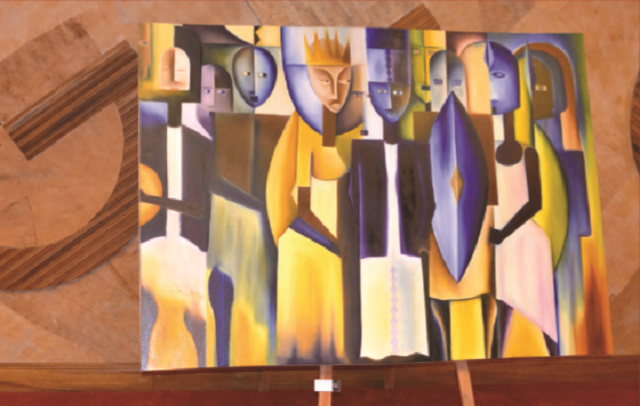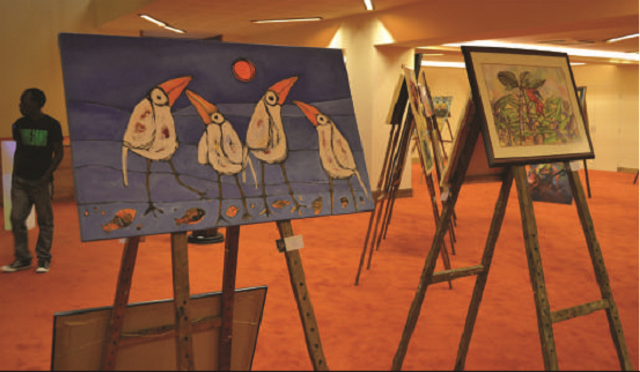
Lack of originality of vision, spontaneity of expression
It is a truism that art does not exist in a vacuum; it is built on a synergy of ideas and approaches within a community. Art production is informed by a culture or sub culture. Whereas there is an obvious element of truth in this, there are some unsavory practices that have simply cast this platitude over the top. A few years ago, Paul Sendagire, a well-known Ugandan printmaker had his works on show at the Emin Pasha hotel in Kampala. A foreign buyer saw them and was exceedingly impressed that he made an effort to locate the artist with the view to make some orders. However, his search was frustrated by another artist who happened to be Sendagire’s colleague. He lied to the prospective buyer that Sendagire was not in the country at that moment but that he too could make even better works than those of his colleagues. The client fell for the bait and as they say, the rest is now history. But that is not the worst scenario. In another; a Ugandan artist who sought to make some quick buck took it a notch higher by copying the style of one of the best-selling local artists of the time and even signed the work as the one he copied.
A quick survey made while writing this story revealed a massive underworld of manipulation among Ugandan artists that is simmering underneath. It is a manifestation of the biting competition among local artists as they scramble for the narrow art market where survival belongs not just to the fittest but now also to the craftiest.
It is a demonstration of the desperation that has bedeviled artists that have chosen to do anything to stay afloat or otherwise risk sinking in the sea of uncertainty. But what bearing has this phenomenon on the identity of Ugandan art? For years now, critical art collectors have decried the homogeneity of Ugandan art with the view that they all seem to have attended the same art school. The industry has been starved of variety of styles, whereby a quick appraisal of gallery exhibitions can easily reveal a lack of originality of vision and spontaneity of expression especially among painters. This is in spite of the infinity of possibilities latent in Uganda in terms of inspiration: rare stories, social environment, the gift of nature and so on. It seems that Ugandan artists have decided to become captives of capitalism where art has assumed a commercial dimension above all else. The role of art as an alternative visual language essential in social commentary and recording history occupies a backseat in the priorities of artists.
Many Ugandan painters have confessed to being plagiarised by colleagues who do it and get away with it at nearly every turn. Few artists are aware of the prevailing copyright laws governing art production, and even those that do, find it hard to engage legal redress to the problem for whatever reason. Paulo Akiiki, one of Uganda more recognisable painters once caught an artist that was prone to painting his style and even signing off his (Akiiki’s) name. He let the culprit off the hook because he was in a desperate situation and could not render him any form of restitution in the event that he committed him to legal procedure. Whether it is a result of intellectual and aesthetic ineptitude or simply a creativity fatigue or deficit, one thing is clear: Uganda’s contemporary art has image issues to deal with that will require a reigniting of a new spirit or else apism will remain an inextricable dilemma.

****
editor@independent.co.ug
 The Independent Uganda: You get the Truth we Pay the Price
The Independent Uganda: You get the Truth we Pay the Price


